| This Renaissance-era woodcut symbolizes the breaking through of the crystal spheres to a new concept of the Universe. (From http://www.concord.org/intec/tools/lck/overview.html, The International Netcourse Teacher Enhancement Coalition |
 |
Key points: Why Copernicus developed a new theory; whether his approach was a success
At the end of the medieval age, a re-birth of human thought provoked a new look at the solar system.
| This Renaissance-era woodcut symbolizes the breaking through of the crystal spheres to a new concept of the Universe. (From http://www.concord.org/intec/tools/lck/overview.html, The International Netcourse Teacher Enhancement Coalition |
 |
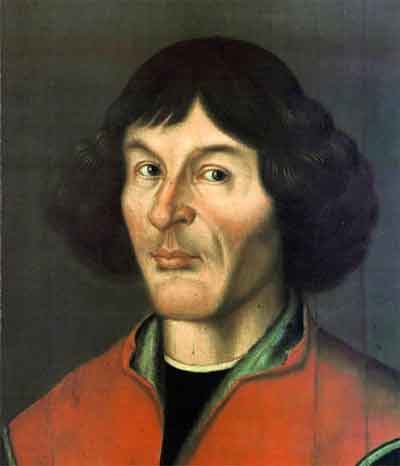 |
Nicolaus Copernicus took the first steps. He was a well-educated Polish churchman who lived from 1473 until 1543 (From Copernicus Museum in Frombork http://www.frombork.art.pl/Ang01.htm). See http://www.phy.bg.ac.yu/web_projects/giants/copernicus.html and http://www.bj.uj.edu.pl/bjmanus/revol/titlpg_e.html | 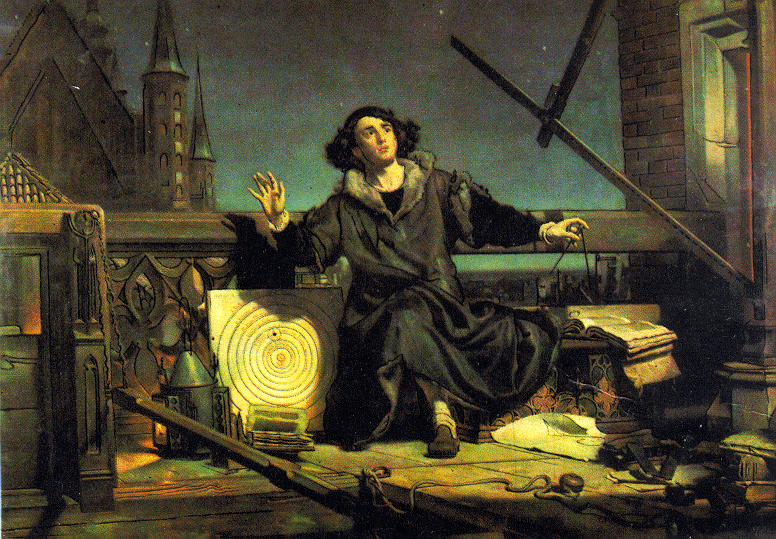 |
He was disturbed at the complexities that had been introduced into the Ptolemaic system to improve its fitting of the planetary motions.
In addition, errors in the Ptolemaic system had accumulated to over 2 degrees from time to time and had been removed by "re-adjusting" the planets' positions. This need for adjustment was not an attribute of a good theory! He hoped to solve this problem with better calculations.
| Astronomers
* had moved the earth slightly off the center of the solar system to avoid needing to have the planets move at varying speeds along their orbits. * had used a different type of epicycle to explain the motions of Mercury and Venus than were used for Mars, Jupiter, and Saturn. * The model got extremely complex for Mercury (and Mars). The figure to the right shows Mercury riding on an epicycle on an epicycle on an epicycle with constant speed measured from a point well off-center! (From Scientific American)
|
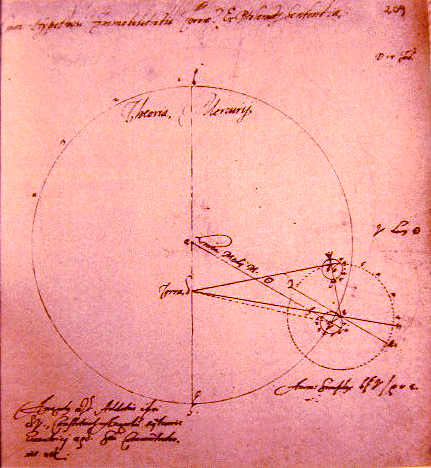 |
Copernicus realized that a few of the complexities would be removed if the earth and planets moved around the sun. This idea was a huge leap philosophically, since he treated the earth as one of the planets rather than as a unique body - previous scientific doctrine had held the earth to be unique.
 |
Copernicus' drawing of his system. He notes that Mars is far from its predicted position. From Marian Zwiercan http://www.bj.uj.edu.pl/bjmanus/revol/intro_e.html |
| A retrograde event in the Copernican model (from Journey Through Astronomy, http://csep10.phys.utk.edu/): |
 |
 |
The dashed line is a comparison of the calculated position of Mars with the Ptolemy/Copernicus systems, as carried out by Origanus, and its true position, as calculated by Kepler (coming soon). The errors were plenty large enough to be obvious: 4 degrees is 8 times the diameter of the moon! (from Owen Gingerich, "Johannes Kepler and the Rudolphine Tables," Sky and Telescope, December, 1971, page 328) |
If the earth is moving around the sun, then the nearest stars should exhibit parallax relative to stars. No one had been able to observe any stellar parallaxes. So the model violated a basic observation.
 |
The parallax is smaller if the nearest stars are far from the earth, but there was no compelling reason to put them so far away that it could not be observed. (from Journey Through Astronomy, http://csep10.phys.utk.edu/). |
Was the Copernican theory able to make any new predictions![]()
The model wasn't even significantly simpler than the Ptolemaic one!![]()
Copernicus was able to calculate the relative distances of the planets from the sun to far greater accuracy than ever before (although this was not confirmed until much, much later).
But the Copernican system was more aesthetically pleasing -- all the planets could be treated on an equal footing with no need to treat Mercury and Venus differently.
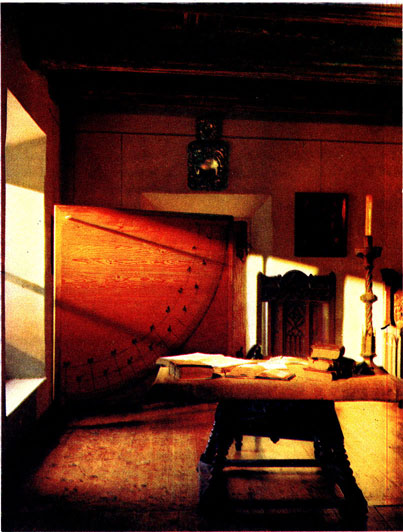 |
Copernicus' system was attractive to him more for philosophical
reasons than scientific ones, and his disregard for observations is made clear by the
simple instruments in his study.
(From Astronomy, Fred Hoyle) |
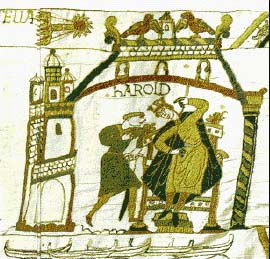
Comet Halley in the Bayeux Tapestry |
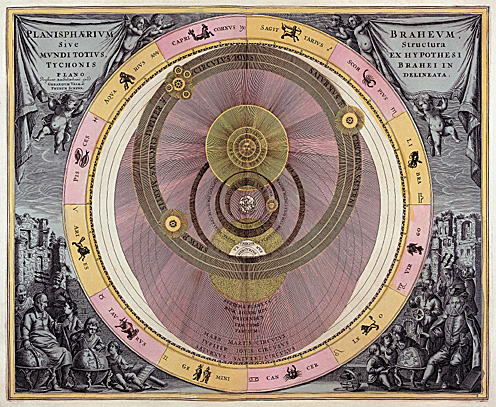
Tycho's model; the sun goes around the earth, but all the other planets go around the sun.(from http://www.uscarom.org/billiard_ball_universe.html) |
|
Click to return to syllabus |
||
| Click to return to Medieval Astronomy | hypertext |
Click for Tycho Brahe |